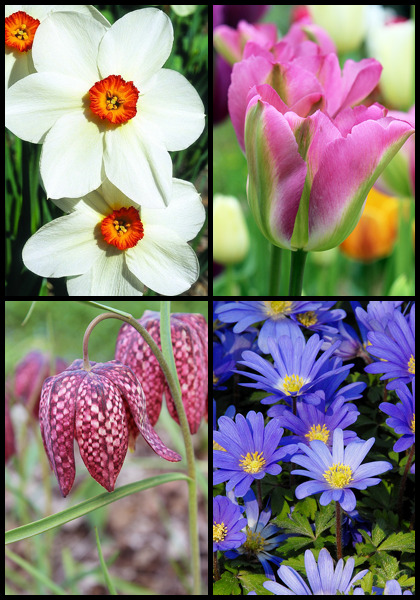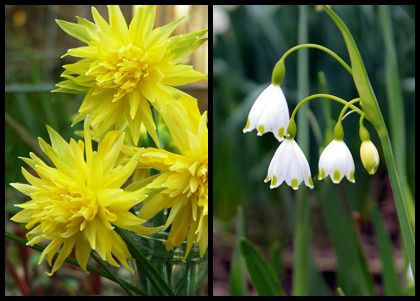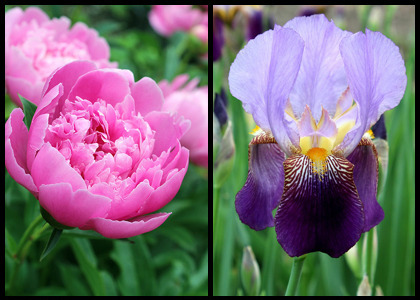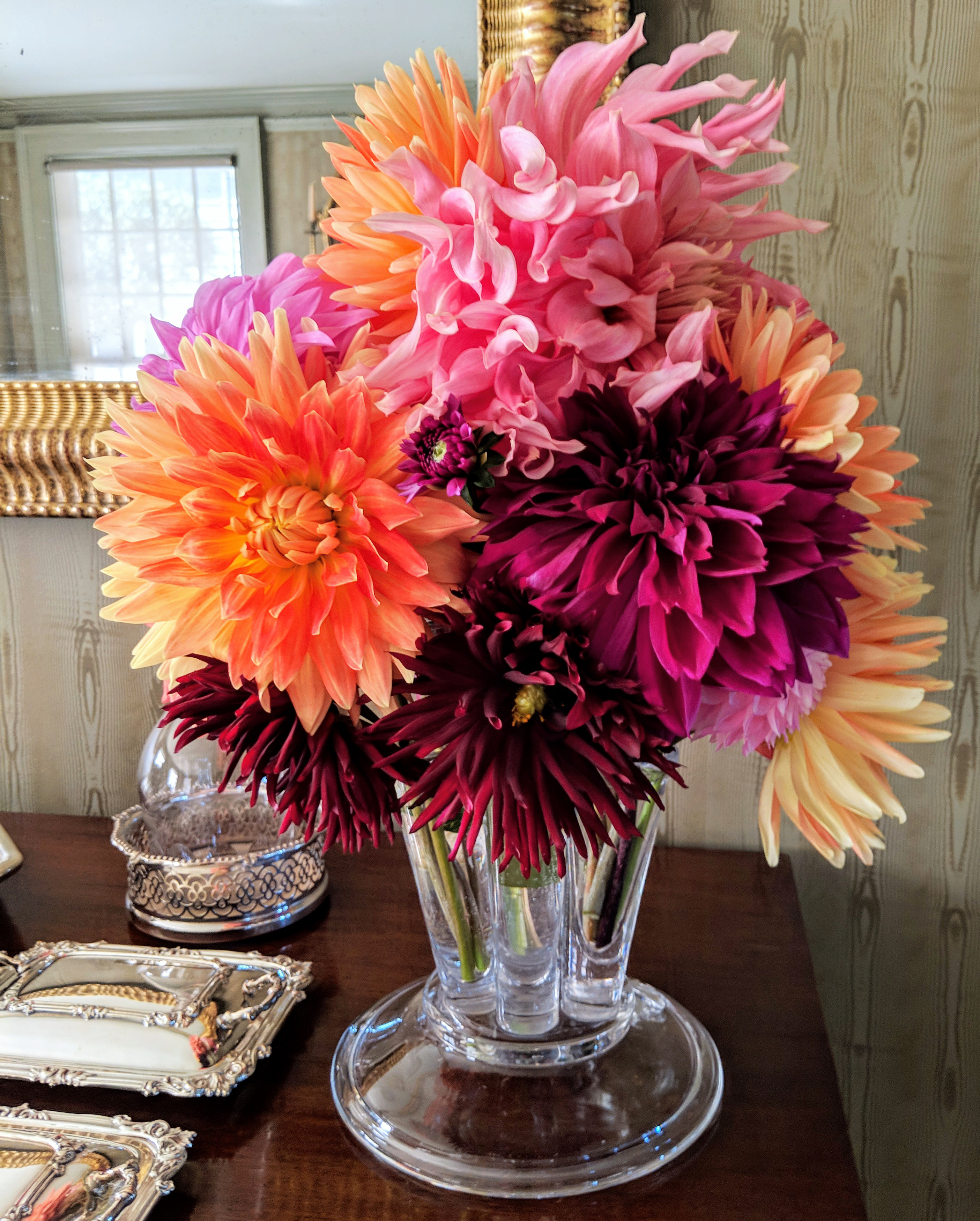To read more by topic or date, see our Newsletter Archives page.
“A garden is like the self. It has so many layers and winding paths, real or imagined, that it can never be known, completely, even by the most intimate of friends.”
– Anne Raver, contemporary American garden writer (Deep in the Green, etc.)

Although a few peonies, daffodils, and hyacinths still haven’t arrived, we started shipping this week and orders have been flying out the door.
Every order that’s already in our hands will be shipped in the next two weeks. These orders are prepped and ready to go and we cannot addon to them. Orders that arrive here today or later will be shipped by early November when our season ends.
Please remember we reserve bulbs on a first-come first-served basis (starting with orders placed LAST November) and ship to customers in colder zones first. (Some have already had snow – we feel your pain, Montana!)
If you’ve given us your email address, we’ll send you a tracking number when your order ships.
We hope you’ll enjoy the anticipation, and happy planting!
Back to the top.

Some might consider it a mistake to order too many bulbs, but we like to think of it as an opportunity to introduce some of our favorite bulbs to even more gardeners – like you.
So here’s everything we just put on sale at savings of 10-25%, and we hope you’ll be tempted to try a few!
8 samplers – including Luscious Lilies and Doubles Delight hyacinths,
16 daffodils – including white and almost-red ‘Firetail’ and lushly fragrant ‘Grand Primo’,
12 tulips – including long-lasting ‘Groenland’ and looks-good-with-everything ‘Queen of Night’,
10 diverse – including spooky snakes-head fritillary and naturalizing Grecian windflower,
6 crocus – including pixie ‘Blue Pearl’ and bee-favorite ‘Cloth of Gold’,
2 hyacinths – including fragrant, multiplying white Roman, and
1 peony – early, unusual Sword Dance (Scott loves this and says “Don’t miss it!”).
Back to the top.

It’s always a pleasure when someone says something nice about your kids, dog, or bulbs.
Writing in the December 2019 issue of Fine Gardening (on newsstands now), horticulturist Andrew Keys recommends seven bulb “standouts that are just different enough to make them alluring” – including two of our heirlooms.
‘Rip van Winkle’ daffodil – “As departures from the everyday trumpet-and-star shape of the average daffodil, flowers on this double variety explode in a flurry of feathery petals, like buttery water lilies afloat in a sea of green.”
‘Gravetye Giant’ snowflake – “Often called ‘summer snowflake’, this plant still flowers squarely in what most gardeners consider spring. Most snowflakes present as just that – delicate, elegant, white-belled petticoats with clean, green foliage. Bigger and more vigorous, supersized ‘Gravetye Giant’ is determined to be the belle of the ball. Snowflakes are easy and unfussy, naturalizing in areas where they’re happy.”
Both of these standouts are also highly animal resistant – and we’re shipping them now!
Back to the top.

It’s important, so every year about this time we remind you that a simple fall clean-up will do wonders for the health of your iris and peonies.
PEONIES – Although they’re generally care-free, peonies can be afflicted by powdery mildew and other fungal diseases.
To prevent disease spores from overwintering, (a) cut stems as close to the ground as possible, and (b) carefully bag everything as you go and throw it in the trash, not the compost.
For best results, do this EARLIER rather than later. It’s okay if the leaves are still green, but if you wait until they’re dry, little pieces will break off and you’ll never find them all. (Yes, I learned this the hard way.)
IRIS – Fall is also the best time to control iris borers which hatch in spring from eggs laid the year before on iris foliage and similar stuff nearby.
To destroy them, wait until AFTER a hard frost kills the adult moths and then (a) cut back all leaves to a couple of inches and (b) remove, bag, and trash – don’t compost – the clippings and any nearby foliage, debris, or mulch.
Pretty easy, right? And remember, healthier plants grow better and bloom more!
Back to the top.

Fall is dahlia season, and we’ve been picking armloads of ours to enjoy in bouquets and to give away to neighbors and friends.
Martha Stewart, who knows a thing or two about gardening and bouquets, had this to say about dahlias in the September 2019 issue of Martha Stewart Living:
“I wanted to grow dahlias ever since I was a child and first saw them in our neighbor’s garden in Nutley, New Jersey. Now I plant them every year.
“To cut stems for arrangements, choose blooms that are fully open. They tend to last longest in a vase. But check the backs of flowers – if petals there are starting to fade or shrivel, choose a younger bloom.”
Pictured here is one of Martha’s bouquets of nothing but dahlias. What could be simpler than that? Now’s the time to pick and enjoy these lush beauties, and it’s not too early to order more – or your first one – for delivery next spring!
Back to the top.

If you’ve ever had the maddening experience of planting something you really wanted and then waiting months for it to bloom only to discover that it’s actually something else, this news is for you.
Scientists in England have succeeded in mapping the entire genome of the chloroplast of Narcissus poeticus, the pheasant’s-eye narcissus. In case your botany is rusty, chloroplasts are the part of a plant where photosynthesis occurs, and this genetic mapping – one of very few that have been completed in the Amaryllidaceae, the family which also includes snowdrops, snowflakes, sternbergia, crinums, clivia, agapanthus, onions, garlic, and amaryllis – is expected to prove valuable in multiple ways.
For gardeners, the hope is that it will eventually lead to a method for identifying daffodil cultivars in bulb instead of bloom. As one of the study’s authors Dr. Alastair Culham of Reading University says, “The technology used in this project … will be both practical and affordable for routine use within the next 10 years. As a keen gardener I have sometimes been disappointed to find special bulbs I’ve planted in the autumn have turned out to be less-good varieties when they flower in the spring. Better management of the supply chain and the ability to authenticate dormant bulbs should stop such mistakes in the future.”
Although it may not entirely end misidentified bulbs, Dr. Culham’s project is definitely a step forward, and we look forward to future developments. In the meantime we’ll continue doing everything we possibly can to make sure every bulb you get from us is EXACTLY what you ordered.
Here at OHG, that’s in our DNA.
Back to the top.
Our September newsletter included:
You can read all of our back-issues at oldhousegardens.com/NewsletterArchives – and we’re adding the best articles to our blog!
Back to the top.
Please help us “Save the Bulbs!” by forwarding our newsletter to a kindred spirit, garden, museum, or group.
Simply credit www.oldhousegardens.com.

















